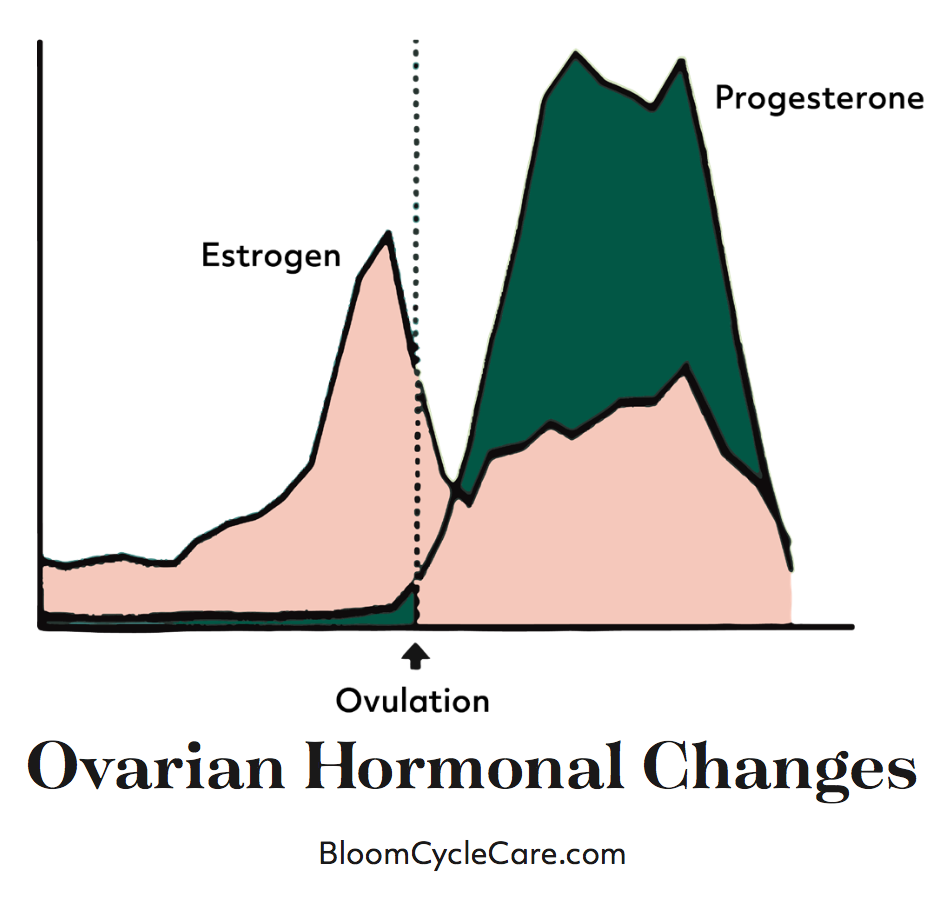Ovarian Hormonal Changes
Did you know that your ovarian hormone levels naturally fluctuate throughout the menstrual cycle? Take a look at this graph, here we see the entire menstrual cycle (no, that’s not just the time you are bleeding during your period). The far left is the first day of your period while the far right is the last day before your next period. The dotted line down the center indicates the time of ovulation (on average, about day 14 of your cycle but this can and does vary for each woman).
Estrogen levels are dominant before you ovulate. As the follicle (containing an egg) grows and develops, it stimulates the production of estrogen which in turn stimulates the production of cervical mucus, a key indicator of a woman’s fertility. After ovulation occurs (this is when the follicle ruptures and releases the egg), progesterone then takes over as the dominant hormone in the postovulatory phase. Progesterone suppresses the production of cervical mucus and the woman enters into a window of natural infertility.
If these hormones are out of balance, a wide variety of symptoms and conditions can occur -- PMS, infertility, acne, and irregular cycles just to name a few. Tracking your cycle is the foundation for evaluation and treatment of any abnormalities with the help of NaPro Technology.
Your body is incredible! It is telling you everything you need to know, learn to listen with Bloom Cycle Care. You’ll learn to track the changes in your cervical mucus and other important signs of fertility - these are called biomarkers - and so much more with the FertilityCare System.

